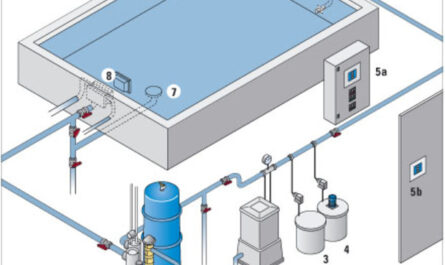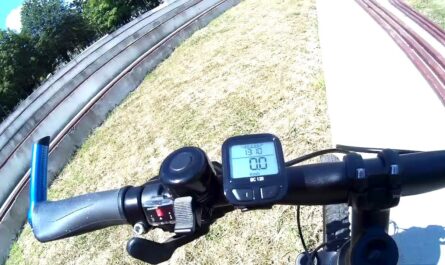Any area where combustible gases, flammable liquids or combustible dust may be present requires specialized lighting designed for hazardous locations. These areas pose unique fire and explosion risks that standard lighting is not equipped to handle. Hazardous location LED lighting is purpose-built to operate safely even in these dangerous environments.
Understanding Hazard Classification
For hazardous location lighting to be designed properly, the hazard level must first be determined. The National Electrical Code (NEC) defines three classes of hazards based on the likelihood of a fire or explosion:
Class 1: Locations where flammable gases or vapors are or may be present
This includes areas like petroleum refineries, gas processing plants and paint spray booths. Gases like hydrogen, acetylene and gasoline vapors fall into this class.
Class 2: Locations where combustible dust is or may be present
Dusts from wood, plastic, grain and coal are common in these areas. Flour and feed mills, grain elevators and chemical plants often have Class 2 Hazardous Location LED Lighting.
Class 3: Locations with easily ignitable fibers or flyings
Textile mills and cotton gins are prime examples. Sawmills handling wood that can easily ignite also qualify.
Under each class are Divisions based on how likely ignition sources are to occur. Division 1 areas have highly ignitable mixtures present continuously or for long periods. Division 2 covers occasional or non-continuous mixtures. Proper lighting must be rated for the specific class and division of each hazardous location.
Safety Features of Hazardous Location LED Lights
LED lighting is increasingly used in hazardous areas due to several key advantages over traditional lighting:
Low Thermal Output – Hazardous Location LED Lighting produce very little heat compared to fluorescent and high intensity discharge lamps. This eliminates a major ignition risk from excessive surface temperatures.
No Fragile Glass – Solid state LED components have no fragile glass or arc tubes to break like other lamp types. This makes them much more impact resistant.
Durability – Rugged cast aluminum or stainless steel housings protect LED boards and drivers. They withstand weather, corrosion and physical abuse better than conventional fixtures.
Integrated Drivers – Rather than external ballasts located outside the light, LED drivers are self-contained within the fixture. This reduces potential sources of arcing or sparks.
Certification – All hazardous location LED fixtures are Factory Mutual (FM) approved, meeting stringent tests for non-incendive circuitry, minimum ignition energy (MIE) and maximum surface temperature. They bear the “Ex” or “Ex e” marking.
Emergency Options – Some LED lights offer integral battery backup, making them ideal for emergency lighting duties in hazardous zones as well.
Energy Savings – LEDs use up to 90% less power than fluorescent or HID lights. This limits energy costs and related hazards from overheating ballasts or fixtures. Their far longer lifespan also cuts maintenance needs.
Wide Temperature Range – Rated from -40°C to over 50°C, LEDs safely operate in extremely cold or hot environments where many other lights would fail. This expands their use to demanding outdoor and process applications.
Advantages of LEDs in Various Hazardous Location LED Lighting
LED lighting delivers clear benefits in different classes of hazardous areas:
Class 1 (Flammable Gases) – The extremely low heat of LEDs minimizes any ignition risk from high surface temperatures. Their impact resistance is also important where volatile liquid gases may be present.
Class 2 (Combustible Dusts) – Dust layers can pile up on heated conventional fixtures, increasing fire and explosion dangers. Cool-running LEDs do not pose this concern. Their enclosed, non-porous designs also prevent dust infiltration better than other types.
Class 3 (Easily Ignitable Fibers) – Textile plants gaining increased use of LEDs cite reliability, energy savings and integral emergency options as major pluses versus older lighting. LEDs produce no arcs or sparks to potentially ignite airborne fibers either.
Outdoor/Wet Applications – Harsh weather conditions cause early fixture failures for many lights, increasing maintenance costs. However, industrial-grade LED hazardous lights withstand moisture, dirt and corrosion very well for reliable long-term performance.
Considerations for LED Lighting Specification
When specifying LED fixtures, some important factors to consider include:
– Light output level (lumens), efficiency (lumens/watt), distribution pattern and color temperature desired.
– Total projected life and expected usage hours to accurately estimate long term costs vs. initial investment.
– Environmental operating conditions like temperature, moisture levels and contaminants present.
– Mechanical integrity needs based on location and risk of physical impacts.
– Emergency requirements for units with integral battery backup.
– Appropriate hazardous location approvals for the intended area classifications.
– Quality, warranty and service/support offered by the manufacturer.
– Future expandability if lighting system changes are anticipated.
– Ability to integrate with control systems for remote monitoring or automation.
As the technology and safety features of LED lighting continue advancing, it provides an increasingly appealing alternative to traditional hazardous location fixtures. LEDs deliver significant energy savings, lower maintenance needs, higher durability and intrinsically safe operation ideal for areas at risk of fires and explosions. When properly specified based on location hazards and environmental factors, today’s hazardous location LED lighting ensures safe, reliable illumination even in the most demanding industrial settings.
About Author:
Ravina Pandya, Content Writer, has a strong foothold in the market research industry. She specializes in writing well-researched articles from different industries, including food and beverages, information and technology, healthcare, chemical and materials, etc. (https://www.linkedin.com/in/ravina-pandya-1a3984191)
*Note:
1. Source: Coherent Market Insights, Public Source, Desk Research
2. We have leveraged AI tools to mine information and compile it.



